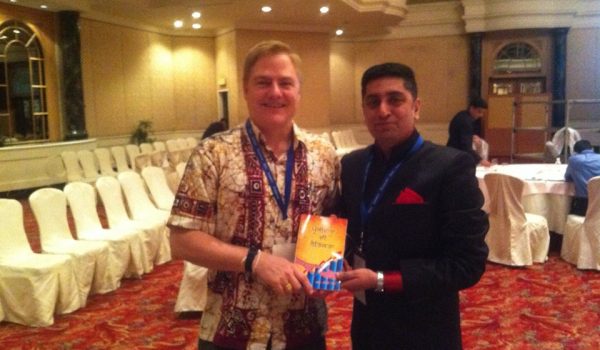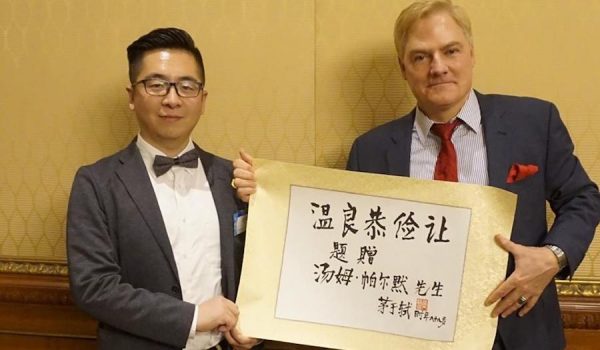Hernando de Soto has done more than any other person in recent years to increase our understanding of the nature and causes of the wealth of nations. The Other Path showed the importance of the legal system to social coordination and wealth creation, putting flesh on the bones of the scholarship of law and economics; The Mystery of Capital focused our attention on the very difficult problems of how property rights systems function and, more significantly, how they emerge. The latter book is a masterpiece. It not only applied high level academic research and explained important principles; it asked questions that had not been asked before and provided useful answers.
John Gravois, a staff reporter at the Chroncile of Higher Education (and an editor of SixBillion.org, “An Online Magazine of Narrative Journalism”) has now written a quite poorly argued but insolent attack on de Soto’s work in Slate.
Much of Gravois’s case rests on the strategic use of dismissive phrases as “voilÃ?Â??Ã?Â?Ã? !”; if you take the time to think about his critique, however, you can see what a poor job he’s done at undermining de Soto’s work.
Let’s start with Gravois’s admission that “Secure property rights probably are indeed, as he [de Soto] puts it, the ‘hidden architecture’ of modern economies–or something like that, anyway.” Well, are they, or are they not? Let’s compare countries with well defined and legally secure property rights with those without. Want to take the bet, Mr. Gravois?
Then let’s go on to his unsourced claim that,
Government studies out of de Soto’s native Peru suggest that titles don’t actually increase access to credit much after all. Out of the 200,313 Lima households awarded land titles in 1998 and 1999, only about 24 percent had gotten any kind of financing by 2002–and in that group, financing from private banks was almost nil. In other words, the only capital infusion–which was itself modest–was coming from the state.
A citation would have helped (but he’s only editor of an online magazine of narrative journalism, so maybe he doesn’t know about links and online sourcing and putting PDF files up and all that). But even so, it sounds like…maybe 24 percent would be better than, say, 0 percent. What’s the baseline? The paragraph makes no serious point that I can discern.
Next, Gravois refers to “legalized but tenuous properties owned by poor people.” In what sense are they “legalized but tenuous”? Is the property right tenuous, i.e., insecure? Or is it ill defined? What on earth does “legalized but tenuous” mean? But it gets worse: he refers to “forced evictions,” which strongly suggests that if the owners are being “evicted” by force, then they are being robbed, and if they are being robbed, then their property rights are being violated. What else could that mean? How can one attack private property rights by saying that the problem with private property rights is that they are taken away? Gravois seems not to have understood the very idea of property.
Gravois’s alternative — based on the ideas of “a British urban planning consultant” who calls for “temporarily insulating slums from the commercial land market by granting informal neighborhoods groups land rights for some period of time” indicates little understanding of some of the problems that collective ownership typically brings with it.
All in all, a remarkably sloppy piece of work by a writer who thinks that being impertinent and affecting a jaunty style is a good substitute for clear thinking and evidence.










Gravois obviously is a bit of a cultural chauvinist. Either that or he hasn’t bothered to research Peruvian history. Or the history of ANY South American country at that. What with unstable political structures, property rights in Peru were traditionally viewed as a sort of “gift” to the masses by the oligarchic melding of government and the landed elite, who gained property through forcibly removing the indigenous peoples, arguing that since they had no established system of property ownership it was free for the taking (even though they farmed and developed the land).
So all in all Peru’s history with property rights is fairly new. In what was called throughout all of South America the “age of the fat cows,” where republican governments stabilized, as did local economies, the middle class grew. Only with the advent of the Marxist guerrillas did the property systems destabilize, mainly because “tomas” (takings) routinely split up larger farms in favor of so called land reform that often left even the recipients unable to produce a profitable crop.
The fact is that Gravois can scoff at 24% all he wants, but with a country with no stable acknowledgement of the concept of fundamental property rights that’s a big step. Only recently did Peruvians begin to trade property and other capital semi-freely. And on a continent where archaic tax structures and economic instability lead to a distrust of credit among poorer citizens, the only true accurate measure is to compare the rate and quantity of increase. De Soto tried to do that. What we need now is to compare studies and measure the net increase in lending, comparing that to legislation that protects a system of property rights in order to quantify their overall proliferation.
I didn’t like Gravois’ piece either, but for the sake of argument let’s say he might counter with something like this:
1) Yes, 24% is not trivial, but the point is that all this money is coming from the public sector, which could be giving the money out directly to the poor on the basis of need. The property rights aren’t relevant here. My point is that private banks, which de Soto claims will jump to lend money once the rights are in place, haven’t touched these slums because, deed or no deed, they see them as worthless.
2) The story about slums in Phnom Penh and Manila – about forced evictions – was meant to make the following point. These people were living just fine in untitled slums until de Soto’s theory came along and the government registered their property. Now, with a cadastral plan in place, rich developers are tripping over themselves to get a hold of these legitimate titles and get rid of the slum-dwellers so they can build there. Which means they have an incentive to exploit legal loopholes to get rid of the poor by forced evictions, or take advantage of their naivetÃ?Â??Ã?Â?Ã?© by offering them low prices for their land, before the sellers have realised just how valuable their property is worth. That’s because even a below-market price is more money than these people have ever dreamt of in their lives. The problem is that they then can’t find housing elsewhere because the phenomenon is taking place all over the country in question. So when the bank sees the land as worthless, they do nothing. When they see it as valuable, they actually hurt the poor.
3) There may be problems with communal ownership, but they’re not nearly as bad as the problems we’re seeing now.
Now that’s what HE might say – not what I’m saying. I think his argument was overblown. His actual critique is quite mild compared to his scathing rhetoric. Which makes me think he just felt he should be nasty because this is Hernando de Soto, darling of Evil Right-Wingers.
Plus, of course, I’m giving him the benefit of the doubt and assuming his information is accurate. If not, the debate is moot.
– Adam
It seems, Adam, that you’re a lot smarter than Mr. Gravois. A problem with Gravois’s piece is that it’s just not clear what he’s saying or what the standards of comparison are. A much smarter critic could have actually told us something valuable, such as whether there is an optimal sequencing of reforms (e.g., do you have to clamp down on judicial or police corruption first, in order to make the property secure?; or do you have to create the expectations of property first, in order to create public demand for judicial probity and good police behavior?). I’m all in favor of criticism, but Gravois seems to think that being glib makes up for lack of sharp analysis and well deployed evidence.
Here’s by Erica Fields (link via Reason’s Hit and Run) that suggests that there’s not much benefit in terms of access to credit.
From the abstract:
“Our estimates indicate that urban land titling is associated with a 9-10 percentage point increase in loan approval rates from the public sector bank for housing construction materials, while there appears to be no effect on the loan approval rate of private sector lenders.”
Now, I love The Mystery of Capital as much as the next guy, but this seems genuinely disappointing. The Hit and Run post neglects to link to this paper, instead citing Field’s other paper on benefits in loabor availability in titled households.
Looks like my links fell out of the above comment. And please forgive the typos.
Here they are, in abbreviated form so as not to botch your page layout:
Field’s positive paper “Urban Property Rights and Labor Supply in Peru”: http://tinyurl.com/5lwrx
The less encouraging paper: http://tinyurl.com/5csua
The Reason thread: http://tinyurl.com/6uuvk
I actually think there is a sense in which it is pointless to discuss Gravois’s critique any further than Tom already has. It is not even clear what Gravois is trying to say, or how his claims, as stated, add up to a criticism of de Soto. An author who begins a sarcastic critique of someone with a half-concession that the object of the critique “probably is indeed right” has crashed and burned before he got to the runway. Once you point that out, you are at “QED,” as in: “quid enough done.”
The criticisms that Tom makes are so obvious and so clearly subversive of Gravois’s “argument” that the only mildly interesting question the article raises is: how did such a pathetic piece of writing make it into Slate, and what does this tell us about the editorial standards of that publication? How do journalists so incapable of argument manage to make careers out of their conceptual illiteracy–and get taken seriously for it? It would take more than a John Gravois to investigate that question, I think. But it also a more important question than any that John Gravois is apt to investigate.
The other key message in Field’s article is that De Soto’s reforms are having a benefit, albeit in an unexpected way: if people don’t need to defend their homes from other squatters then they can get a job. The fact Gravois left that off shows us he doesn’t really care about informing his readers.